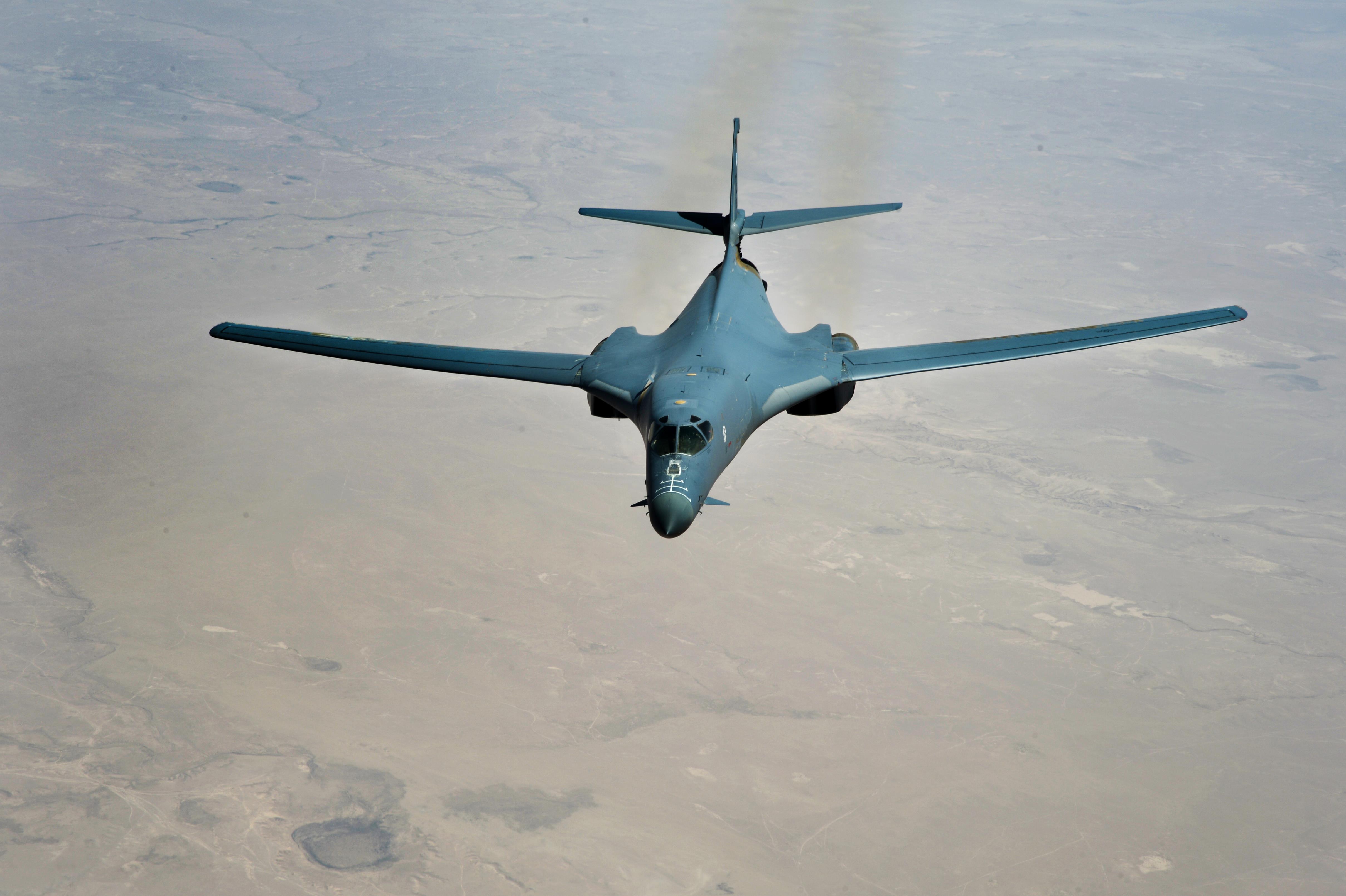A B-1B Lancer from the 34th Expeditionary Bomb Squadron prepares to depart after refueling over Southwest Asia in support of Operation Inherent Resolve, the anti-ISIS operation, on July 23, 2015. Air Force photo by SSgt. Sandra Welch.
Given its heavy usage and its high operating cost, the B-1 may be retired sooner than the B-52, which is 20 years older, according to Air Combat Command chief Gen. Hawk Carlisle.
In a recent interview with Air Force Magazine, Carlisle said the B-52 has “good bones,” was “built to last, and “if you ask … my opinion, I’d say it will outlast the B-1.”
Though he cautioned that Global Strike Command chief Gen. Robin Rand gets to make the call on bomber inventories, Carlisle noted that he operated the B-1 in ACC and found it to be “an expensive airplane to fly, it’s hard to maintain, it’s hard to keep up.”
While the Bone does “incredible work, it’s a great airframe … it’s just a difficult airplane to keep at a high [mission capable] rate.” The B-1 was the workhorse in Afghanistan and Iraq over the last 15 years, and possibly “just … hours consumed” will take the B-1s out of service before the B-52, Carlisle said.
The B-1 has a great payload, he said, but the B-52’s is almost as great, and it can carry a great diversity of weapons, particularly standoff weapons, that will “help [it] stay relevant.” He particularly mentioned the B-52’s maritime capability with the LRASM (Long-Range Anti-Ship Missile) variant of the AGM-158 JASSM and ability to carry directed-energy munitions derived from the Counter-electronics High-powered Advanced Missile Project (CHAMP) as two reasons why the B-52 will remain relevant as a standoff platform.
It’s also very useful in uncontested airspace, he said. “In a low-end fight, like what it’s doing today in the fight in Iraq and Syria, it’s doing incredible work,” Carlisle said.
The last B-52H was built in 1963—but for most of its career it sat nuclear alert and so did not rack up a great many flying hours—while the first B-1B entered operational service in 1986. The B-1 is now going through the Integrated Battle System upgrade to its displays, computers and the adding of a digital radar.
